Read Loopscale: An Order Book Lending Protocol on Solana
Original title: "Loopscale: Order book lending on Solana"
Author: Compiled by Castle Labs
: Luiza, ChainCatcher
Despite Ethereum's DeFi total locked value (TVL). ) is still far from its peak in 2021, but Solana's TVL has achieved significant growth and is now at an all-time high.
The characteristics of the Solana ecosystem make it ideal for lending protocols. Protocols such as Solend are proof of this, which had deposits of nearly $1 billion as early as 2021. Although the FTX collapse had a severe impact on the development of the Solana lending ecosystem in the years that followed, lending protocols on Solana have shown strong resilience and spawned a new wave of growth.
In 2024, the TVL of the Solana on-chain lending protocol is less than 10 billion dollars, and today that number has exceeded $4 billion. Among them, Kamino leads with a TVL of more than $3 billion, and Jupiter leads with 7.5 A TVL of 100 million yuan follows.
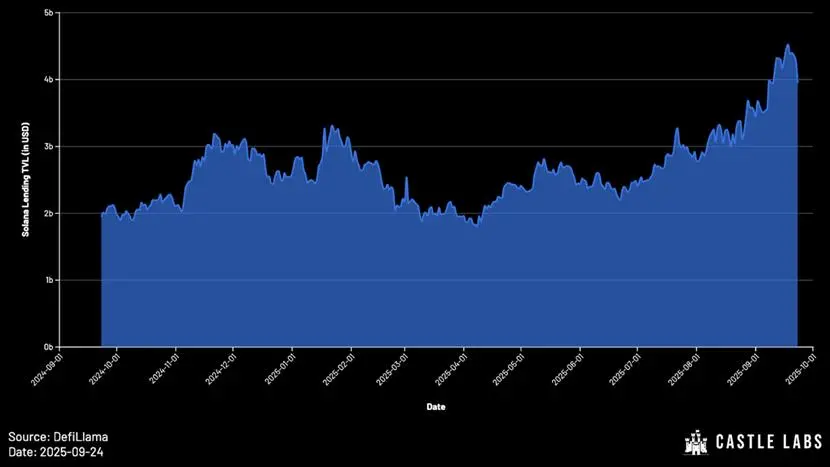
This study will first analyze the limitations of pool-based lending models and the rise of other alternative models. This is followed by a deep dive into Loopscale's value proposition, unique features, and the practical benefits it brings to users. Finally, the future development trend of the lending market is prospected, and some questions worth thinking about are raised.
Evolution of Lending Models Mainstream
lending protocols like Aave and Compound commonly use the pool model: users inject liquidity into the pool for others to borrow. The interest rate is dynamically adjusted by the algorithm according to the utilization rate of funds (total amount of borrowing/total amount of deposits).
In the early days, due to the limitations of Ethereum's mainnet architecture, the design flexibility of such protocols was limited. Although the fund pool model has advantages in the startup stage and ensuring the liquidity of collateral assets, it has obvious shortcomings:
- Rough pricing for risk: The utilization curve is a "one-size-fits-all" pricing mechanism that is inefficient and can ultimately lead to terms that are either overly aggressive (too risky) or overly conservative (too low return). In fact, the interest rate of the pool tends to be on par with the riskiest collateral assets in the pool.
- inefficient use of funds: In the pool lending market, only the loaned funds will accrue interest, but the interest income needs to be distributed to all deposit users. This means that lenders actually earn less interest than borrowers pay, creating "deadweight capital." In addition, idle funds in the pool will also participate in interest distribution, further widening the spread mentioned above.
To mitigate these issues, Euler, Kamino (V2), and Morpho ( V1) and other protocols introduce curated vaults, where professional managers allocate funds and set interest rates.
This pragmatic improvement can be transformed without the need for lending protocols to completely refactor the technology stack, while addressing some of the problems with the pool model. In the selected vault model, the vault is managed by a screened "curator" who has professional research and risk control capabilities, and is responsible for capital allocation, market selection, interest rate setting and loan structure design. The advantages of this model include:
- users can choose different vault managers, each designed for a specific risk appetite, and users do not need to be exposed to all the asset risk supported by the pool.
- liquidity is still scattered across multiple separate markets;
- interest rates are highly volatile, making it difficult to meet the needs of institutional users;
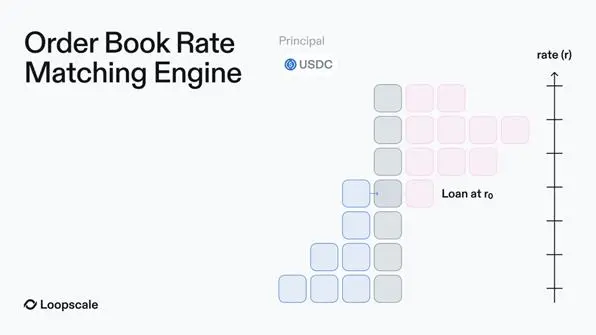
(1) Automated Vaults:
For users looking to streamline operations even further, Loopscale automates processes through its own "Curated Vaults." The liquidity injected into the vault is available in all manager-approved markets, each with a risk manager responsible for setting unique risk appetite and strategies.
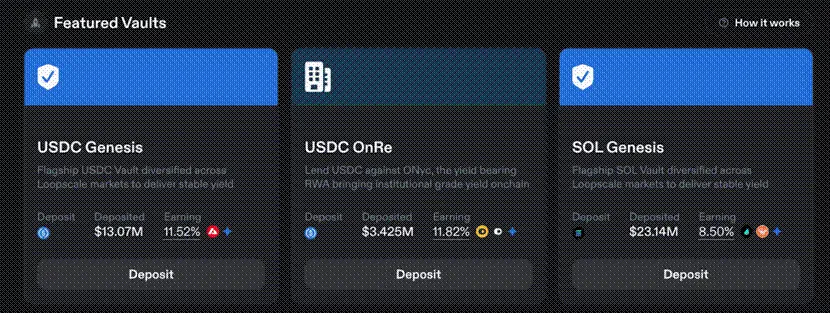
This design forms a differentiated strategy system that can meet the risk needs of different users: for example, some users may be willing to take on reinsurance-related risks (through the ONyc token) through the USDC OnRe vault; Users with a conservative risk appetite can choose to deposit funds into the USDC Genesis vault, which provides a robust liquidity diversification across Loopscale's markets.
(2) One-click revolving leverage:
In addition to traditional lending, Loopscale also supports the "Fund Circulation" function. Through this function, users can leverage interest-bearing assets (including JLP, ALP, digitSOL, ONyc, etc.), and the specific principle is as follows:
The core logic of the capital cycle is that after depositing collateral assets, borrow the same assets as the collateral assets, so that both the initial position and the borrowed tokens can generate income. The leverage available to users depends on the loan-to-value ratio (LTV) of the market.
Taking liquid staking tokens (LSTs) as an example, the traditional capital circulation process is as follows:
1Deposit wstETH (wrapped staked ETH);
2.Borrow ETH;
3. Exchange ETH for wstETH;
4.Borrow ETH again for higher wstETH yields.
It should be noted that the capital revolving operation only has real returns when the yield of LST is higher than the annualized interest rate of borrowing.
On Loopscale, this process is simplified to "one-click operation," eliminating the need for users to manually complete multi-step operations.
Through the fund circulation function, users can maximize the APR of interest-bearing tokens.
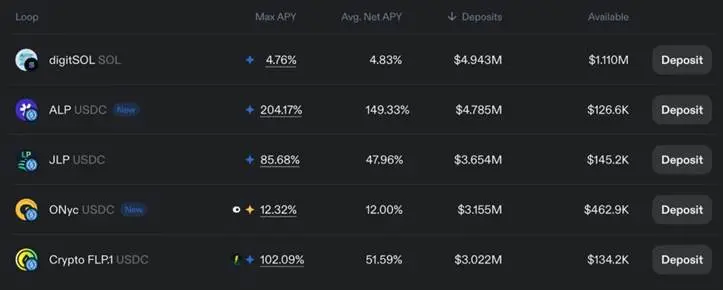
Additionally, leveraged money cycles allow users to trade with directional leverage on assets such as stocks.
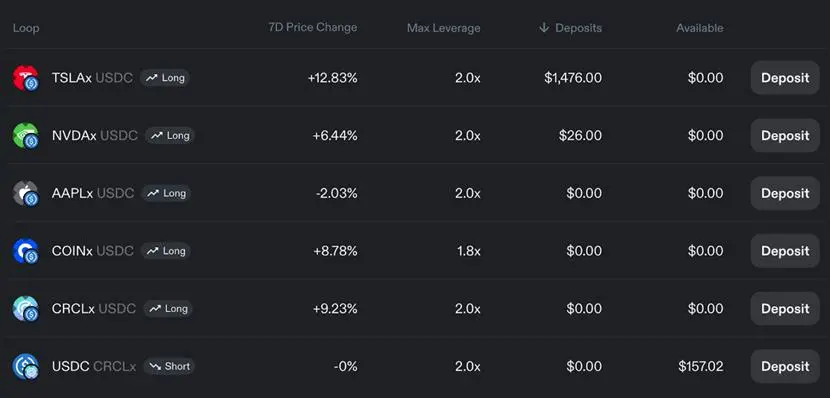
(3) Solutions to the shortcomings of the pool model
(1) The liquidity aggregation
order book model can solve the problem of liquidity dispersion in the pool market. Loopscale further solves the problem of liquidity fragmentation in the pool model and the difficulty of reusing funds in the early order book model by creating a "virtual market". Lenders can synchronize pending orders across multiple markets with a single operation, without being limited to a single market or managing multiple positions.
(2) Efficient pricing
Each marketplace on Loopscale is modular, with independent collateral asset types, borrowing rates, and terms. This means that lenders can set interest rates on specific collateral assets and principal and are no longer limited by capital utilization. Ultimately, the interest rate for each asset is dynamically adjusted based on market supply and demand in the order book, which can be influenced by factors such as asset volatility.
This design also achieves the following goals: to minimize "ineffective money"; Ensure that the borrowing interest rate and the deposit interest rate match exactly (in the pool model, "interest income needs to be distributed to all deposit users, resulting in the lender income being lower than the debit cost", while on Loopscale, interest is only paid to the funds actually used, achieving an accurate match of interest rates);
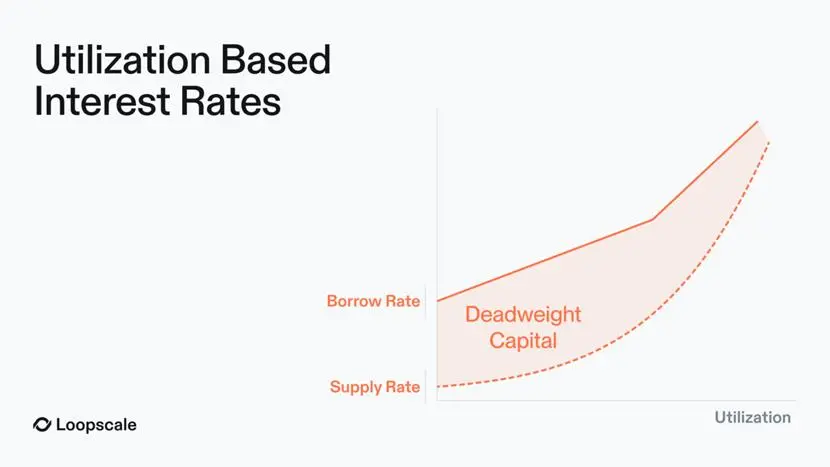
In particular, support fixed-rate, fixed-term loans to meet the needs of institutional users - institutional users are often reluctant to accept interest rates based on utilization fluctuations in the pool model.
(3) Optimize Capital Utilization
Loopscale uses the "Optimize Yield" mechanism to reduce idle funds waiting to be matched in the order book. The logic is straightforward: Loopscale directs this idle liquidity to the MarginFi platform, ensuring that lenders can still "earn competitive yields" until order matching is completed.
(4) Expanded asset support The
Loopscale team can easily integrate with other protocols and take full advantage of Solana's asset composition. Support assets that are difficult to access liquidity in the pool market.
(4) Actual benefits for users
The above features bring tangible benefits to users: users can fully control the loan terms, mortgage assets and the market they participate in to achieve refined management; As the lending market becomes more competitive at the interest rate level, the Loopscale model has an advantage over pool utilization-based pricing – by directly matching orders, interest rates can be accurately aligned, saving both borrowers and lenders.
Future Outlook and Conclusion
Loopscale confronts the inefficiencies of the pool model by combining the flexibility of the order book with a modular market, providing users with customized interest rates, optimized collateral pricing, and risk management tools.
As DeFi expands to institutional capital and RWA, the order book model will become an important infrastructure for the scale of on-chain lending. Loopscale has supported a wide range of RWA and exotic assets and continues to expand its cooperation. The new market requires only oracles and initial liquidity (which can be provided by vaults or individual lenders), and the barrier to entry is significantly lowered.
Currently, the Solana ecosystem is benefiting from the widespread adoption of new token prototypes, including billions of dollars worth of LST, liquid staking derivatives (LRT), and staking SOL (already 60% of the total SOL supply), liquidity positions, RWA assets, etc. In this context, lowering the access threshold for new assets as collateral is the key to improving market efficiency. The viability of the order book lending model has been widely recognized by the market – protocols such as Morpho have introduced a similar design in their V2 versions.
Although Loopscale is expected to launch a 2025 project in April May (shortly after the launch) was hacked, but the team showed great resilience and all funds have been recovered. It is important to note that handling complex collateral inherently carries risks, both from the operational level and the user interface level, and sufficient risk assessment and control are required. If these challenges are properly addressed, Loopscale is expected to leverage Solana's technology stack to optimize its architecture and smoothly advance the platform's scale.
